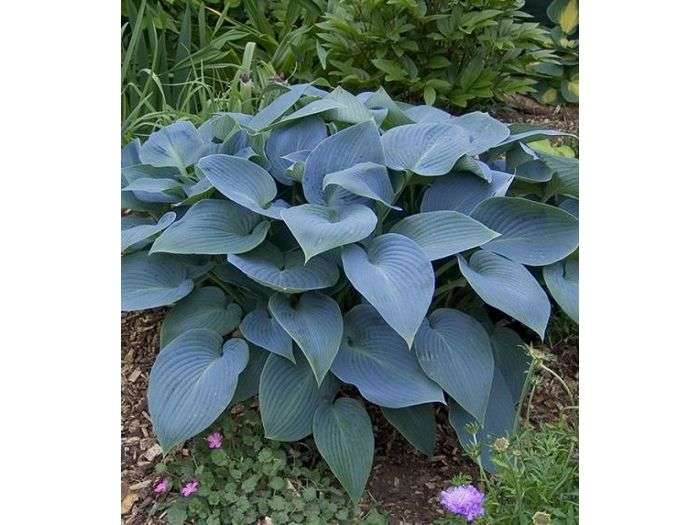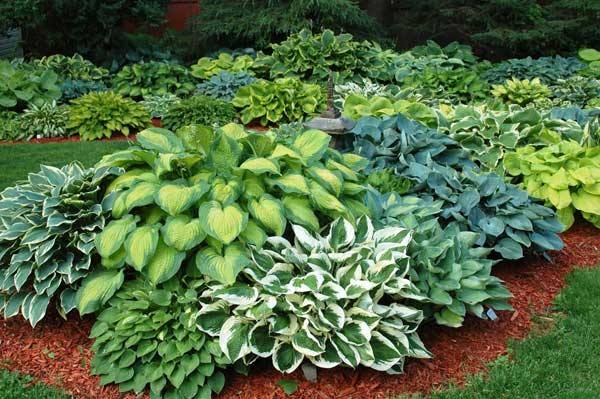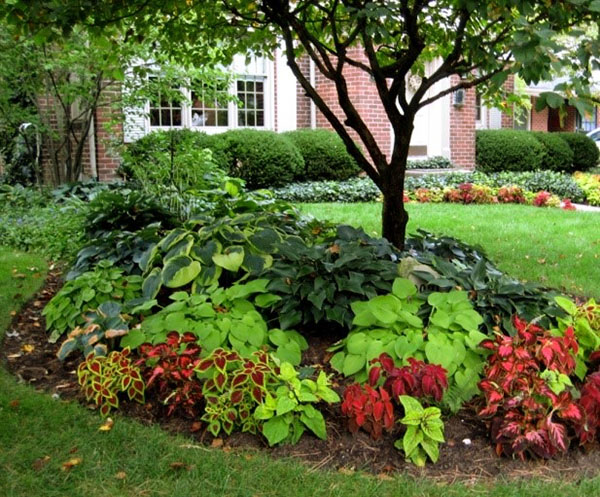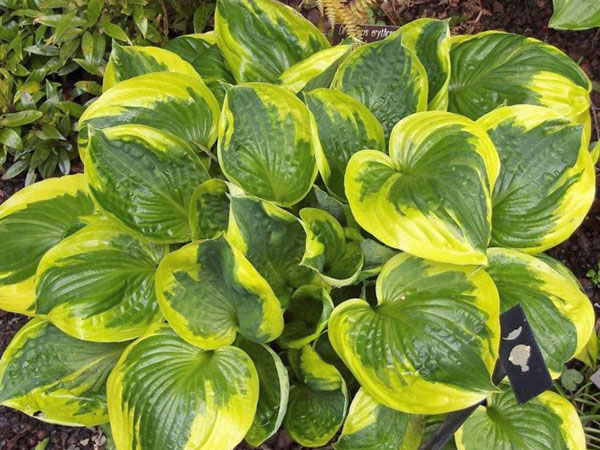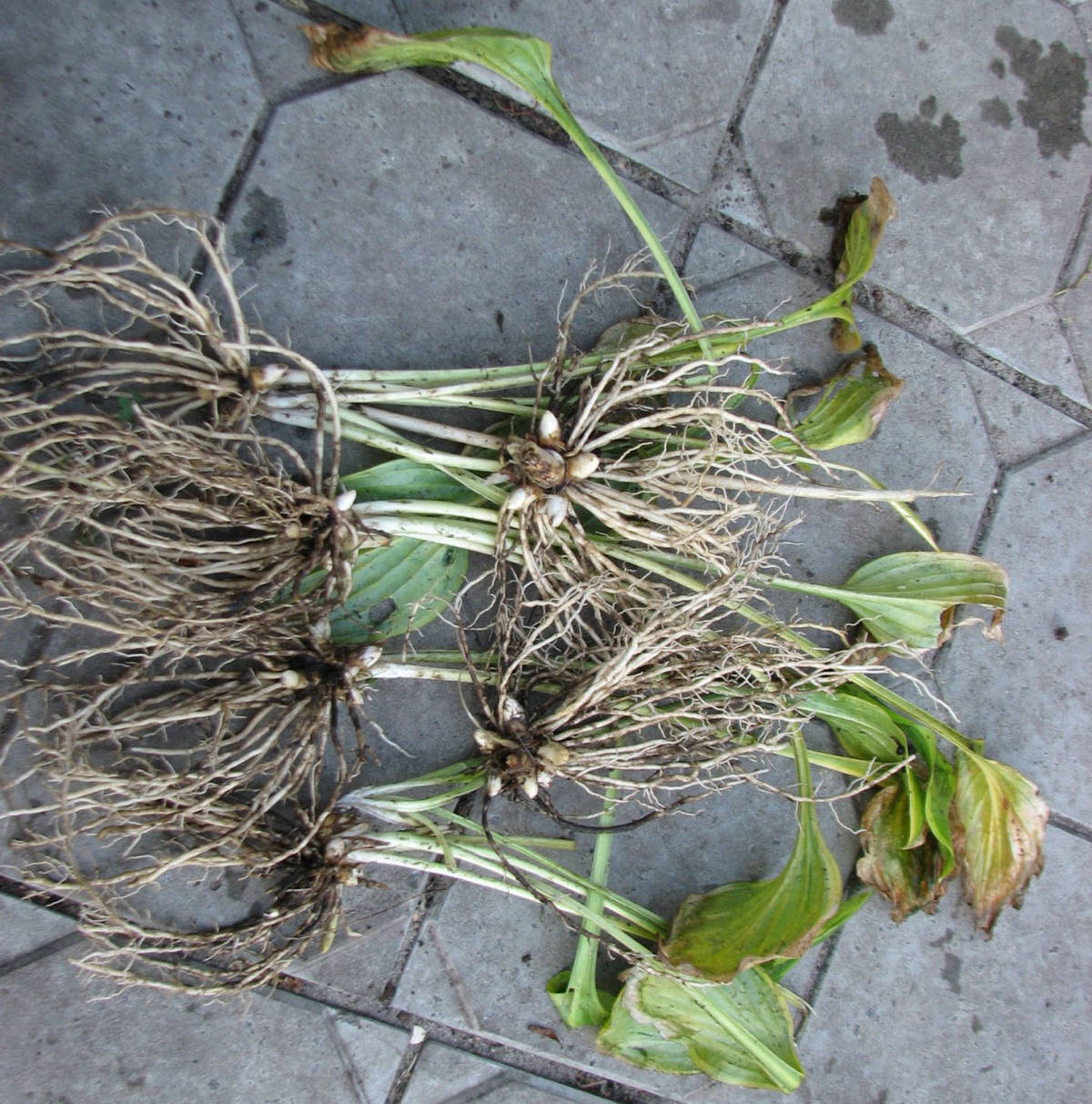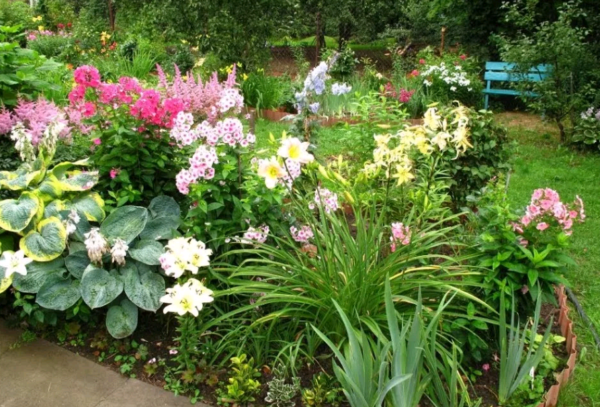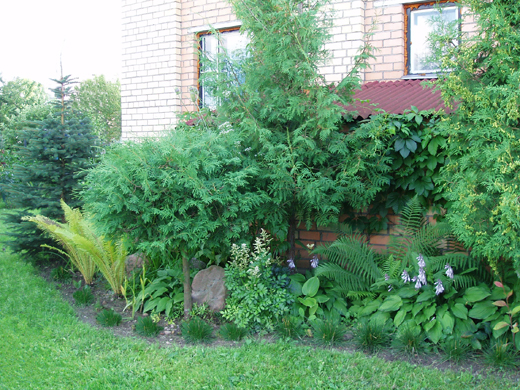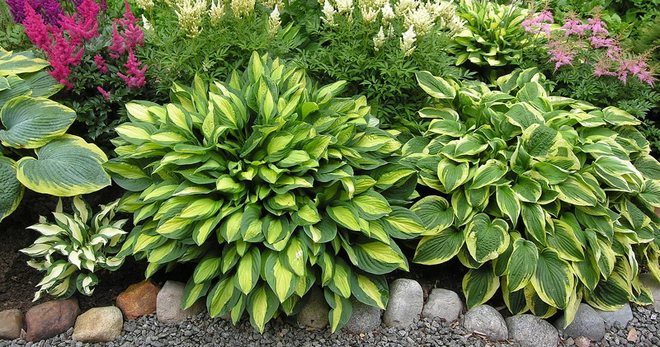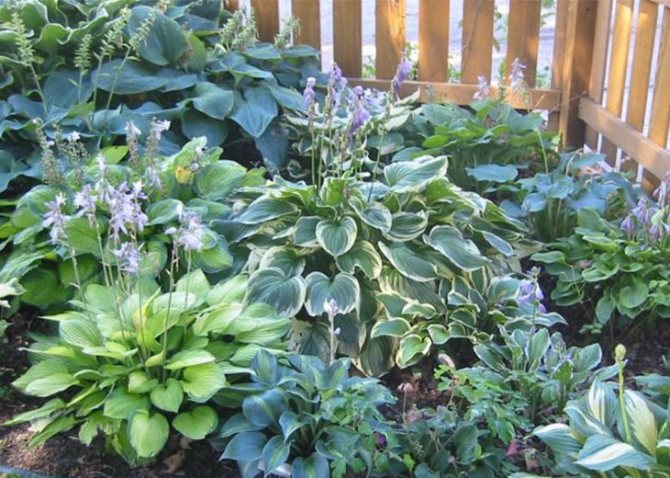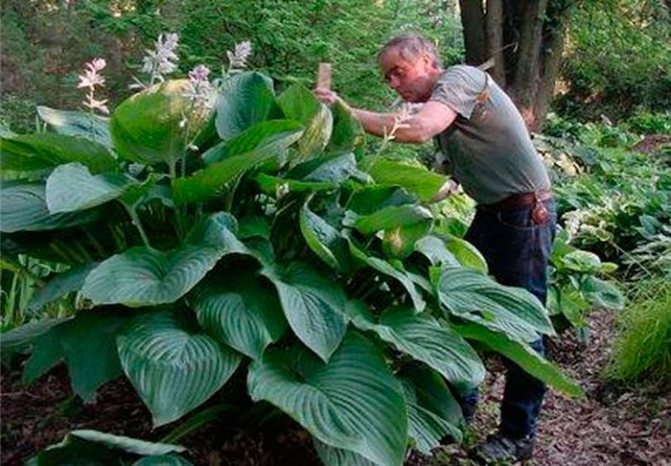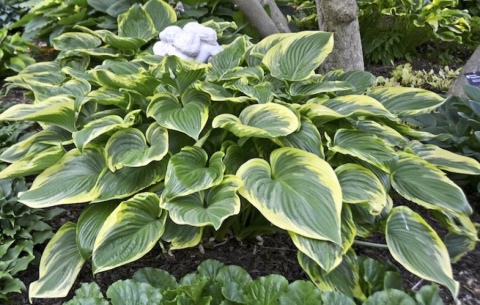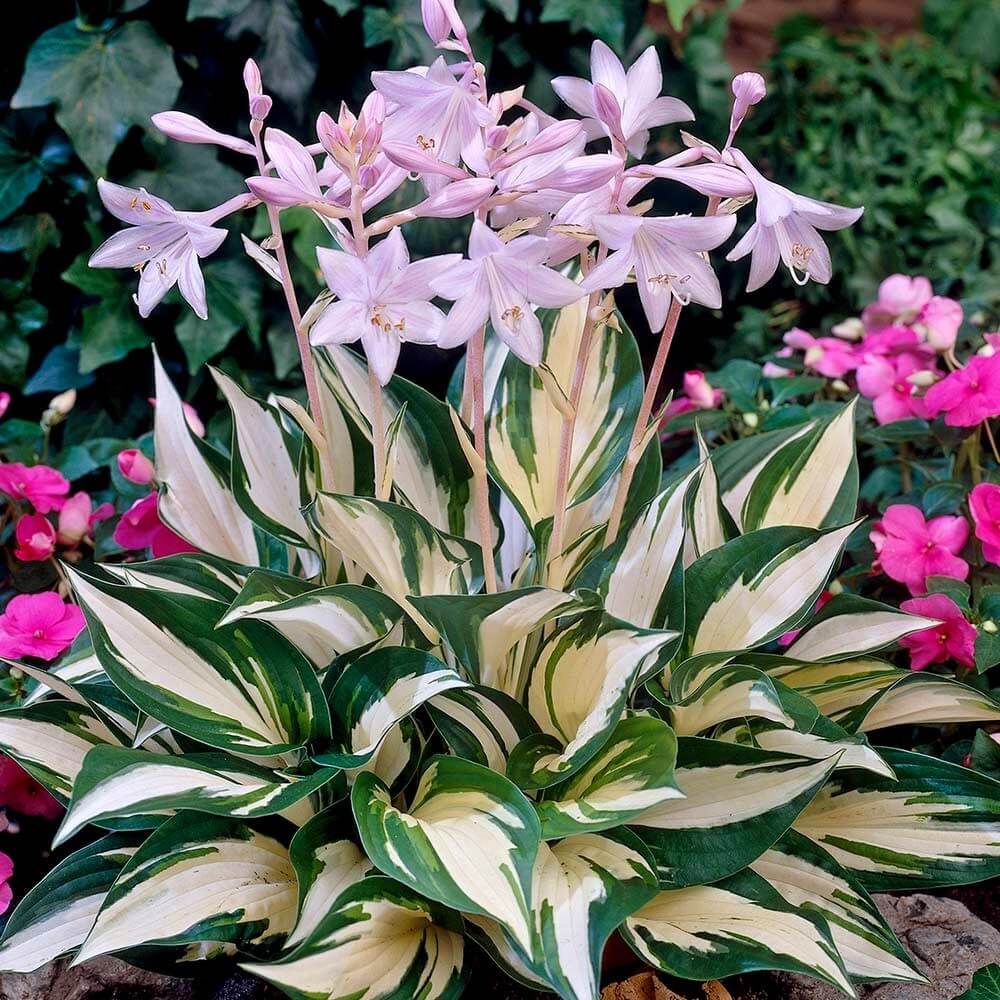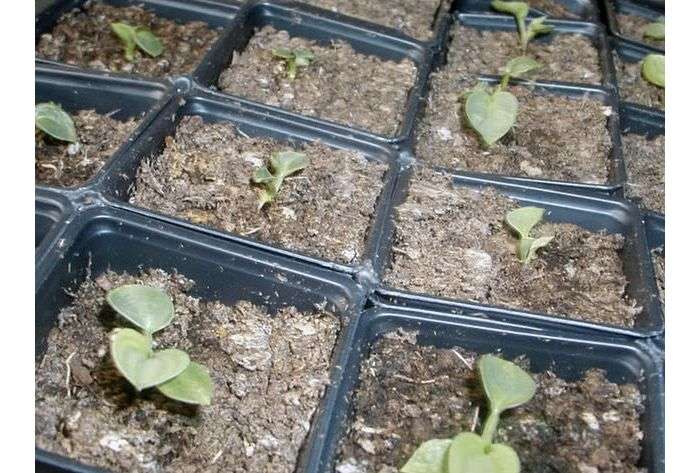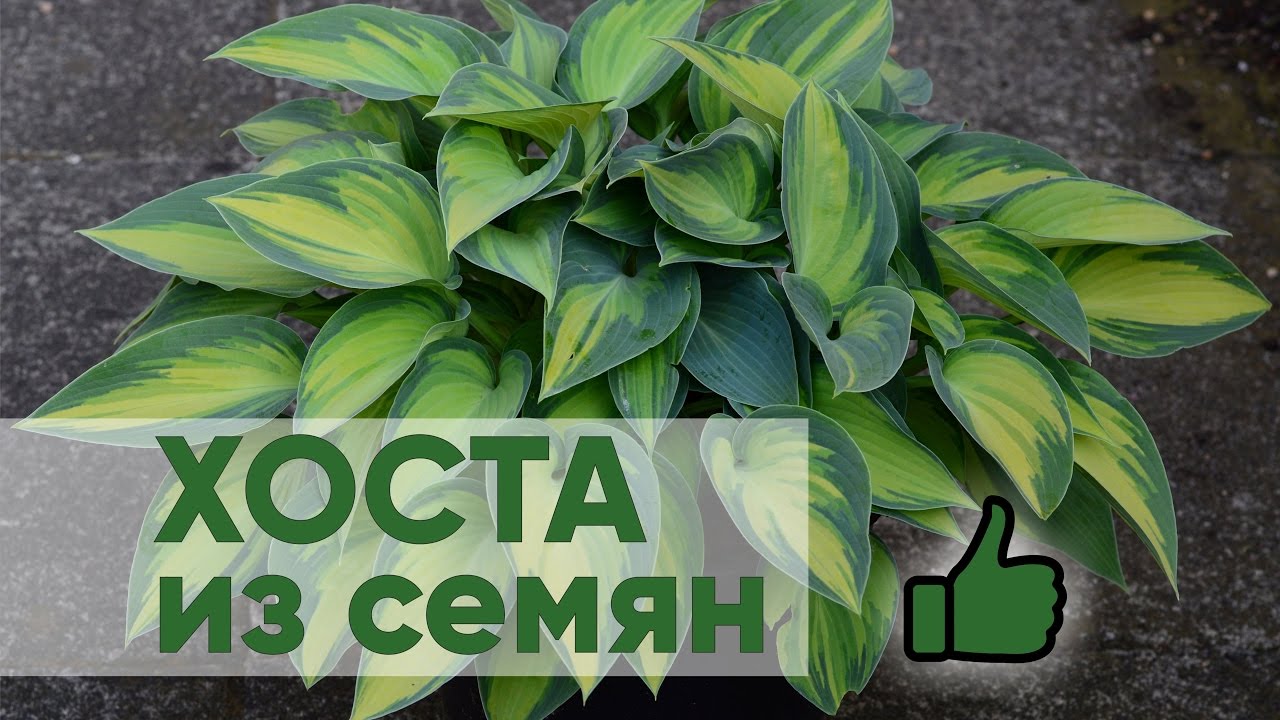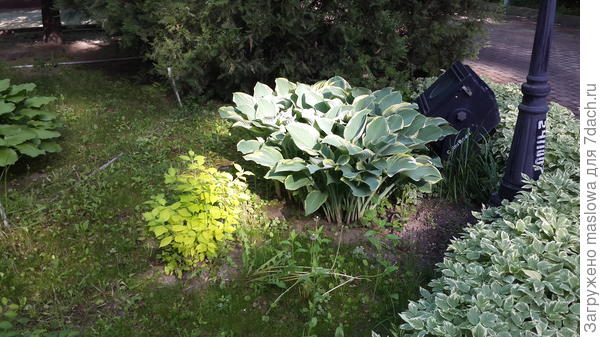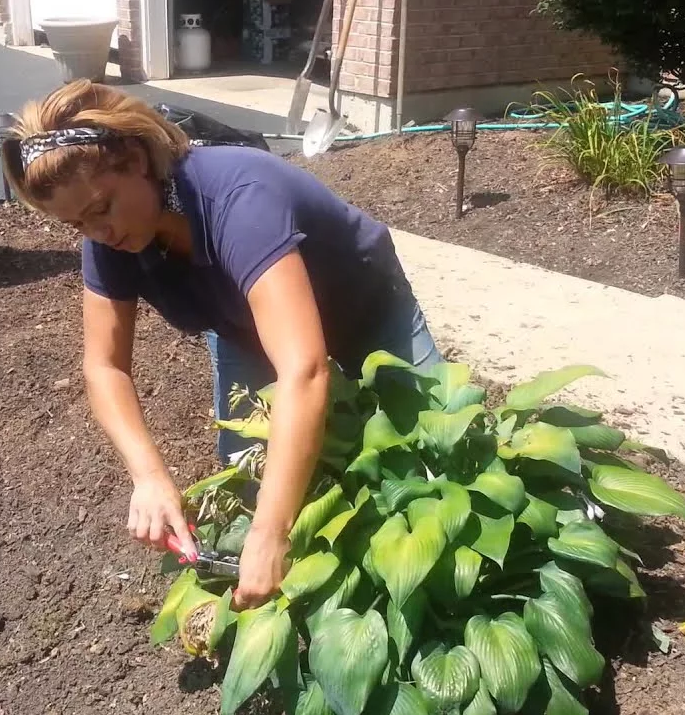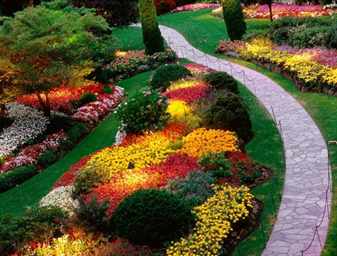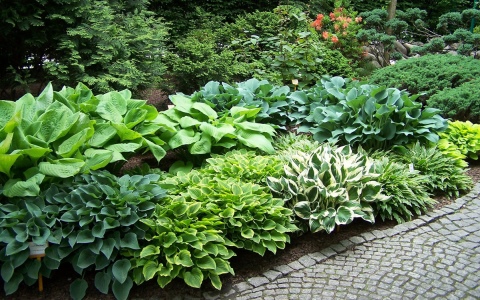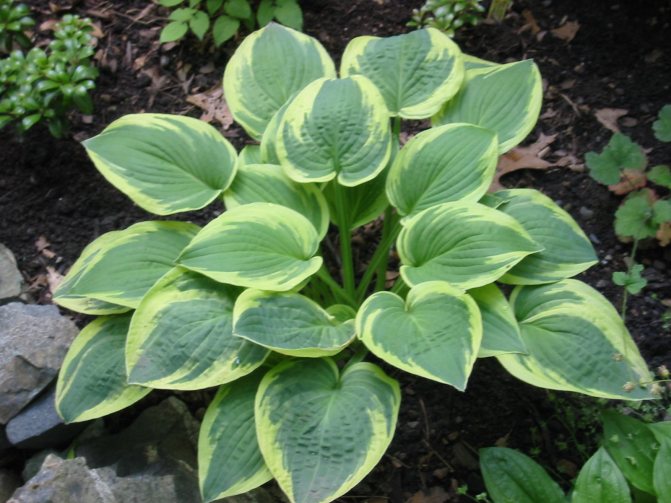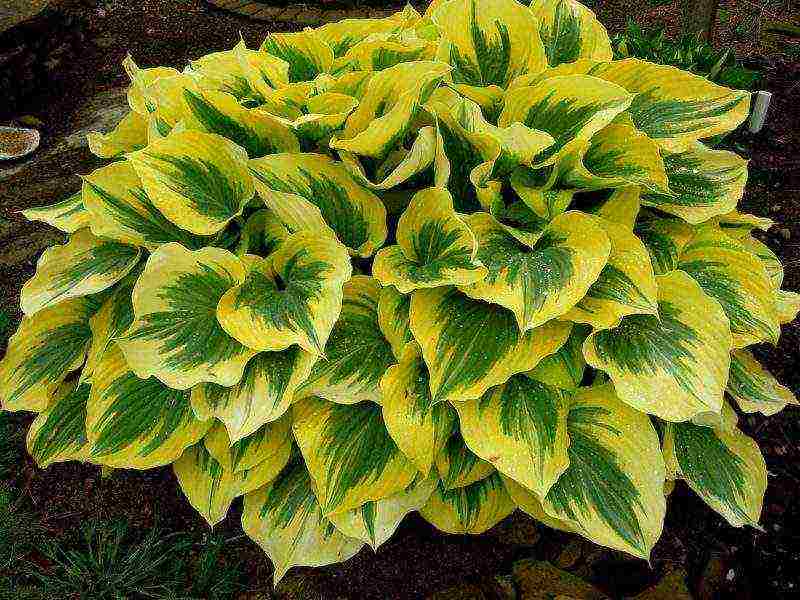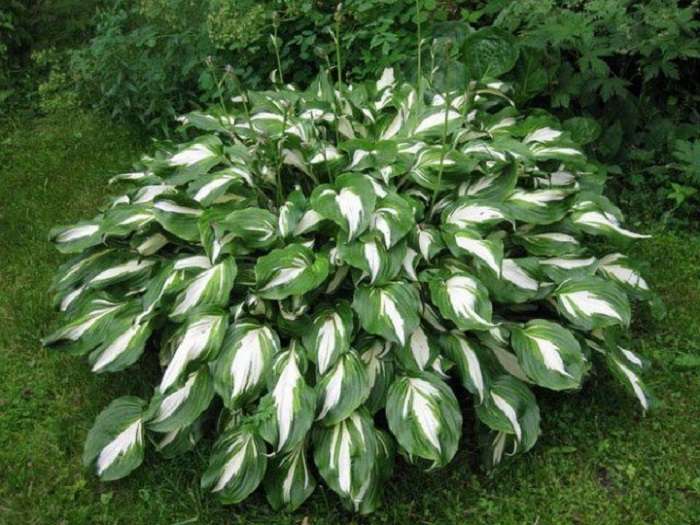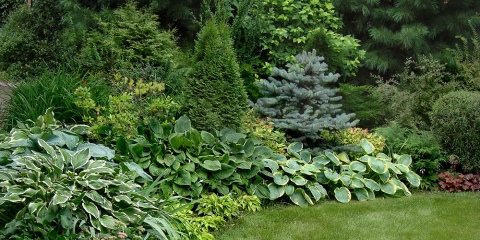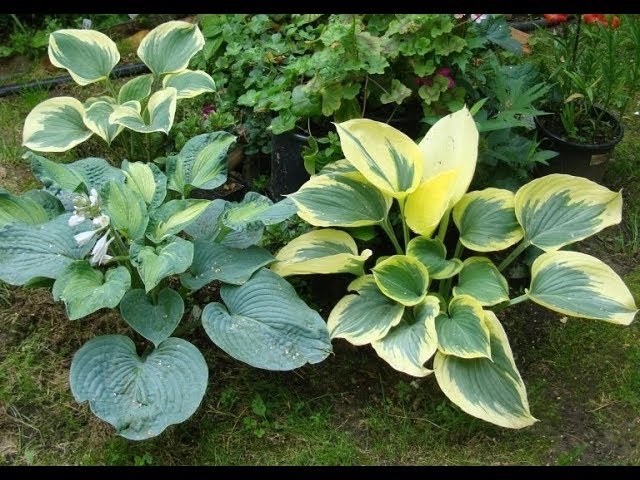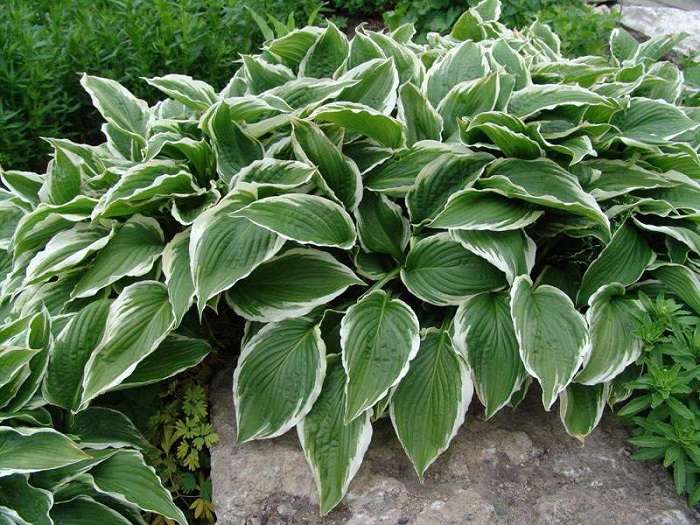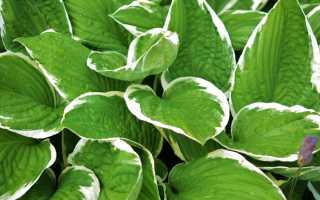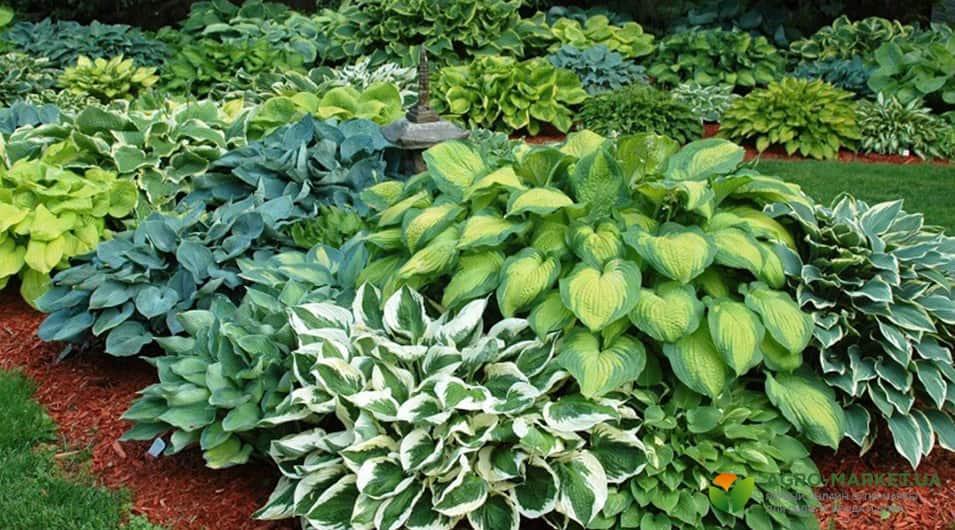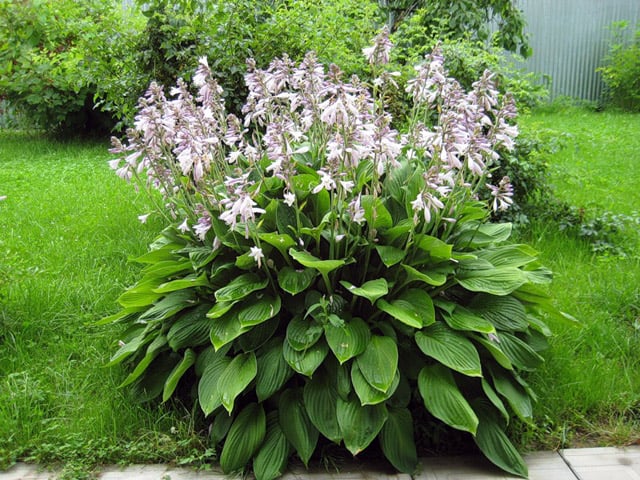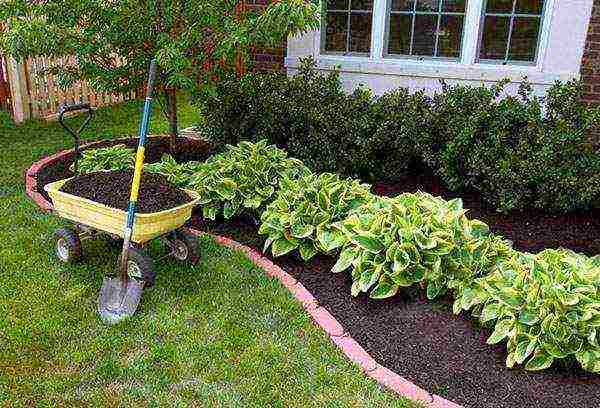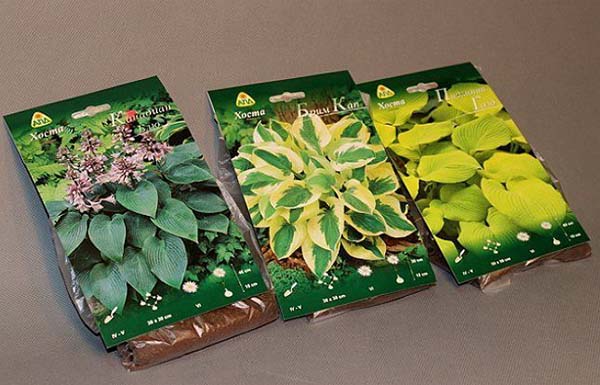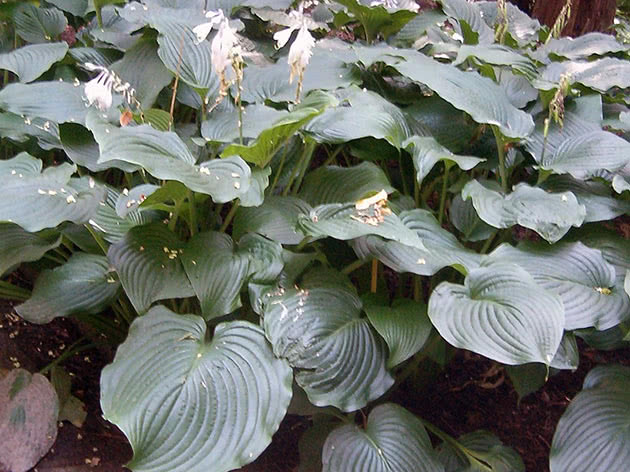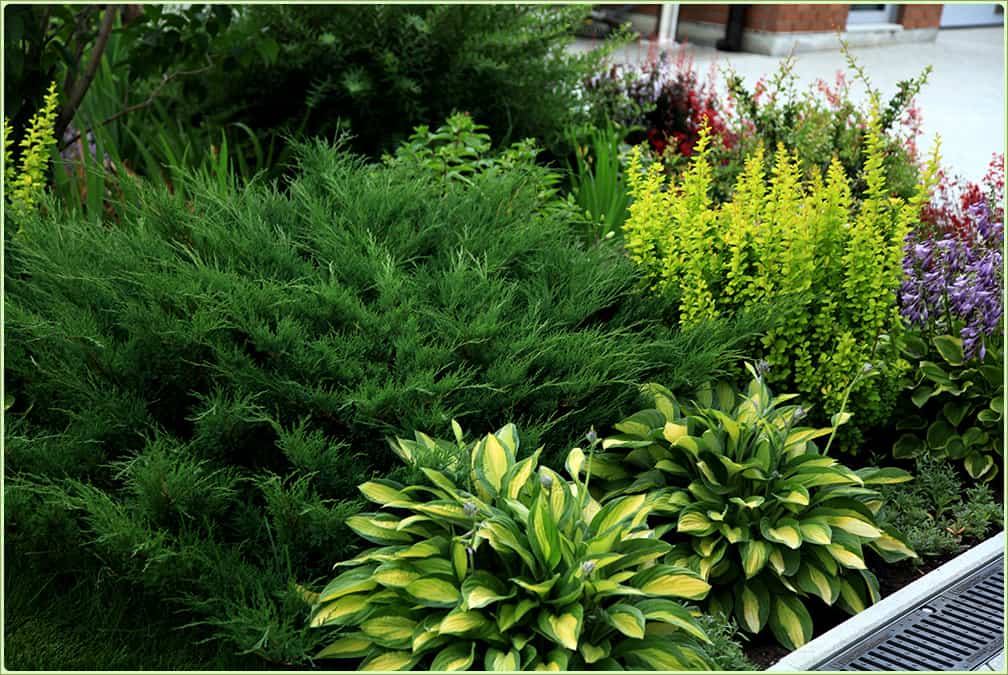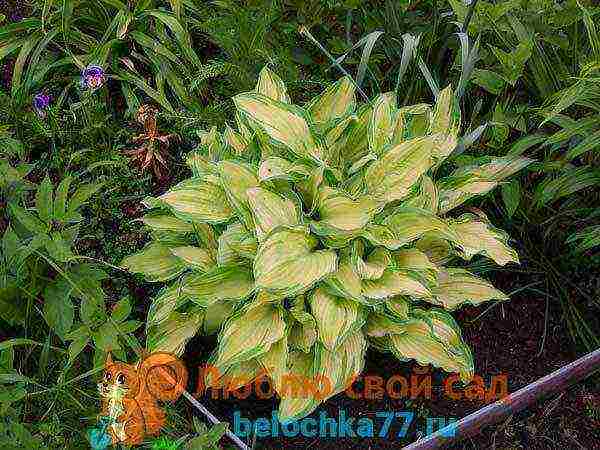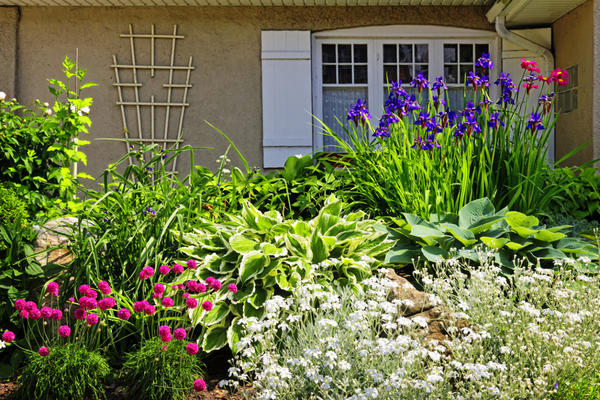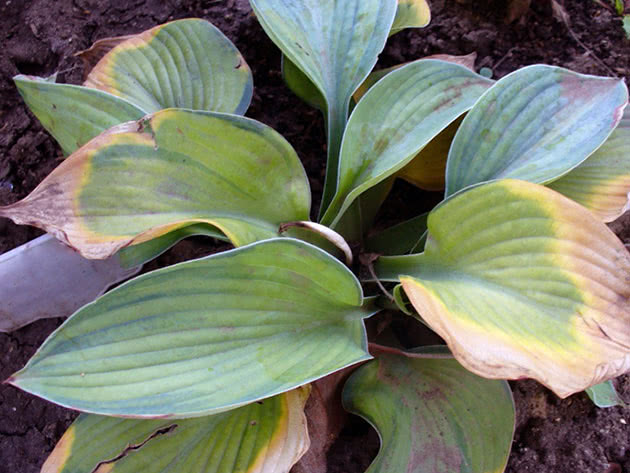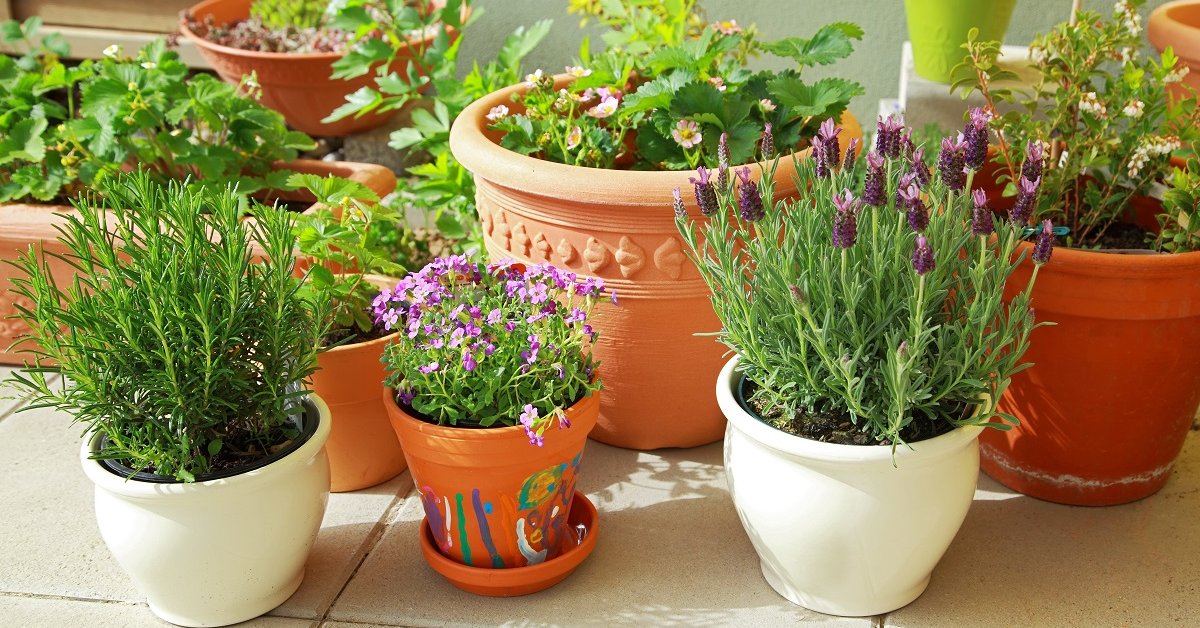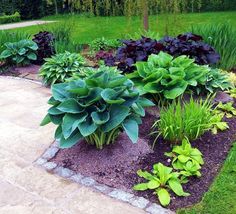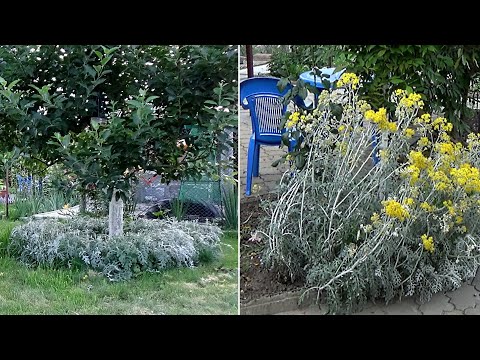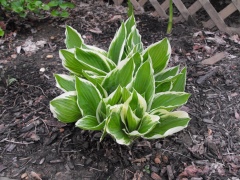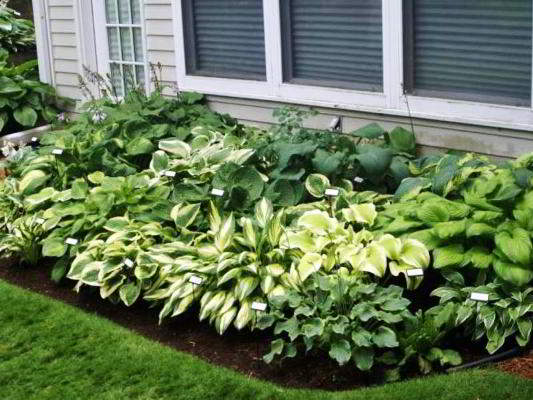Reproduction hosts
Varietal hosts are propagated vegetatively - by dividing the bush and grafting. You can propagate flowers by seed method, but this procedure is more laborious and time-consuming: the seedlings achieve a decorative effect only in the fourth year.
The division of hosta bushes is best done in spring, late April, early May or September
The bush is dug up, the roots are carefully cleaned from the ground, divided so that each part has 1-2 rosettes of leaves and roots. Delenki are planted in prepared holes to the same depth at which the mother plant grew
The distance between the parts during planting is kept within 25-35 cm. After filling the holes, the surface is watered and then mulched.
Hosta cuttings are carried out from May to July: easily separable shoots with a heel are suitable as cuttings, and it is desirable that they have shorter petioles and smaller leaves. Before planting, the leaves of the cuttings are shortened by a third or even half. Cuttings are planted in the ground and watered. At first it will seem to you that they have died, since their leaves lie helplessly on the ground. Shade the cuttings from direct sunlight, water and spray them in the evenings, and soon the plants will regain turgor, and then new leaves will begin to appear on them.
Growing hosts and care
The main thing is regular watering, which should be done after sunset, but not too late - the leaves should have time to dry by night.
The bush will thank you with its beauty and splendor if you spoil it with an evening shower from time to time.
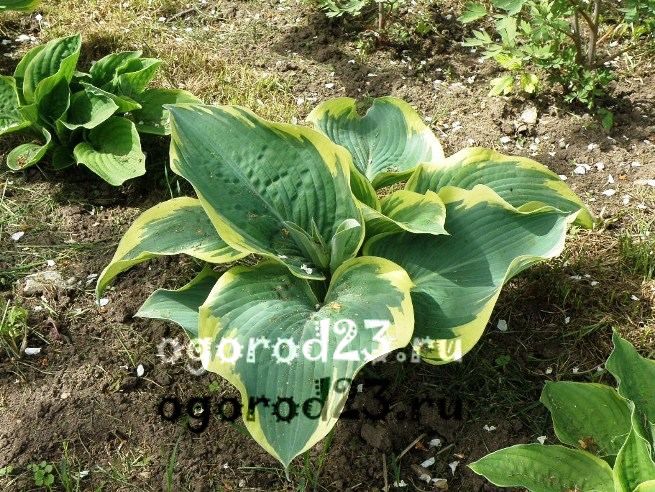
But remember: blue varieties cannot be watered from above, since the leaves of this species are covered with the thinnest layer of wax, which is washed off with such irrigation. Firstly, the leaves remain unprotected from external influences, and, secondly, they lose their decorative effect, since it is the wax that makes the leaves blue.
It is advisable to feed the hosts several times a season:
- in the spring, after the appearance of the first rudiments of leaves,
- during flowering,
- after, as the plant fades.
Alternate organic and mineral fertilizers.
In the spring, you can add compost "tea" - a real energy drink for all plants, including fruit species. This is the secret of many gardeners.
It is easy to prepare: put the fully "ripe" (this is important!) Compost in a gauze bag (about 3-5 glasses), tie it up. Place the compost bag in a bucket filled with water
Insist "tea" for about 3-4 days, stirring occasionally. When the color of the solution begins to remind you of strongly brewed tea, you can use it to feed plants without diluting, concentrated.
But if the resulting compost "tea" has an unpleasant putrid smell, then it should not be used.
During flowering, any fertilizer containing potassium, nitrogen, phosphorus is suitable. And after the hosta has faded or in the fall, you can put ready-made dry compost or humus under the bushes.
The magnificent view of the beauties of the garden also implies the timely removal of yellowed old leaves, peduncles, weeding, mulch replenishment if necessary.
These are frost-resistant plants, but in very severe frosts, in the absence of snow, rare collection varieties can be covered with spruce branches or white covering agromaterial of good density in two layers.
They do not like when they are disturbed, they can grow in one place for a long time. They can not be transplanted for twenty years.
If the sockets have grown a lot, having conquered the allocated space too tightly, then it is still recommended to divide the bushes once every 5-6 years.
Reproduction
Hosts can be propagated in several ways:
- By division;
- Seeds;
- In a vegetative way.
Division

Which method to choose depends on the type of plant. For example, not all species tolerate fission well. Some of them, after such a procedure, cannot grow and develop normally for about 2 years. But if you divide the host bushes, then you should do it in the spring or at the end of summer. The bushes are separated using tools such as a sharp knife, shovel or pitchfork. By the way, the latter helps to injure the root system less.
In order for the cuttings to take root quickly, the leaves on them should be cut in half.
Growing from seeds
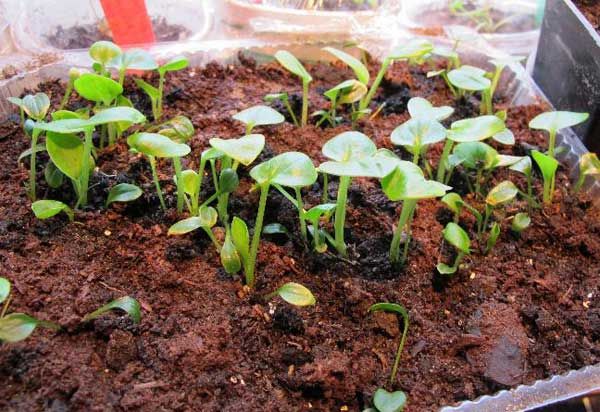
Not all host varieties grow well from seeds. The weather also affects seedlings. This method is bad because with it young plants do not retain all the specific features of the variety. This is good only for breeders who benefit from a variety of seed offspring. Hosta can be sown in spring after cold stratification or before winter. Seedlings develop for a very long time. They will be able to achieve a decorative appearance only after 4-5 years of life.
Reproduction of hosts by seeds: video
Vegetative way
Vegetative propagation is the most efficient way in the case of a host. Most often it is used on a large industrial scale. The hosts are grown in test tubes. This technique is presented in several ways. In the first, a kidney placed in an artificial environment grows at a certain temperature, humidity and light. Plants grow and after a couple of weeks they can already serve as mother plants for the separation of new buds.
Plant propagation
There are 3 ways to propagate hosts:
- division;
- cuttings;
- growing from seeds.
The bushes are usually divided in May or late summer. The smaller the split off part is, the longer it will take for it to grow. Another method of propagation, cuttings, involves the separation of a sprout with a part of the rhizome from an adult bush. Cuttings are planted in open ground immediately, watered and shaded.
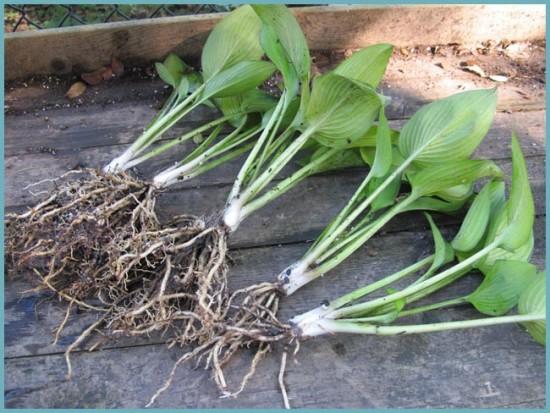 Dividing the hosta bush
Dividing the hosta bush
Growing hosts from seeds is a laborious and time-consuming process. The germination rate of the material is 70-80%, therefore, before sowing, it must be treated with growth stimulants. Another way is to keep the seeds in the cold for 30 days.
It is also important to ensure that the soil and planting containers are sterile. Before sowing the hosts, the pots must be disinfected with potassium permanganate or alcohol.
Seed propagation should start in April or May. Pour drainage into containers, then soil mixture, water it. Spread the seeds, sprinkle them with soil on top (layer thickness - 5-7 mm). Slightly press it, cover the container with glass or film and place in a shady place. Hosta germination temperature is + 18-25º C. In such conditions, seedlings appear in 2-3 weeks.
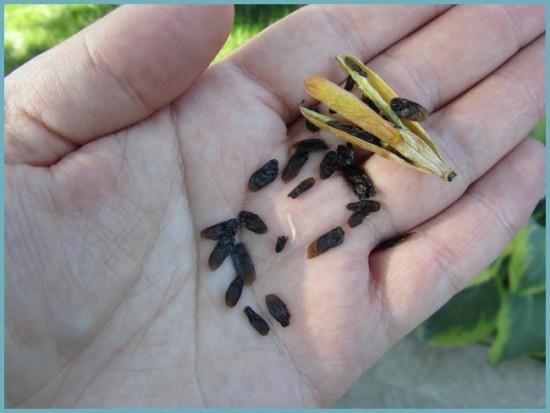 Hosta seeds
Hosta seeds
At this time, caring for young seedlings consists in moderate watering and removing condensation. Keep the sprouts in a lighted place, away from direct sunlight. When the first pair of leaves appears, dive the seedlings. The soil in new containers should be ¼ covered with sand. For watering, place the pots in a deep bowl and wait until the top layer is damp. Temper the sprouts: temporarily remove the glass or film, and after about a week, remove them altogether.
If the air temperature is already above + 18º C, leave the seedling containers in the fresh air for a short time. Experienced gardeners warn: despite proper care, the hosta develops very slowly. In addition, she often loses the characteristics of the variety.
Care
- Weed the plant periodically. Remove old and dried leaves.
- Loosen gently and shallowly, since the roots of the hosta are close to the surface.
- Remove the flower stalks, then the bush will be neat and will not fall apart in different directions.
- In the fall, before frost, cut the bush at the root. Cover the plant with compost.
1. Top dressing
- Feed the plant 3 times per season: in spring, during flowering and in autumn. Top dressing should be carried out after watering.
- They are fed with mullein diluted 1:10 with water, superphosphate and saltpeter.
- In the spring - urea and humus mulch.
- It is better to alternate organic and mineral fertilizers.
- Apply fertilizers in granules with care so that the leaves do not get burned.
2. Watering
Special attention is paid to watering, the plant loves moisture. Darkened leaf tips are a sign of moisture deficiency
Bushes, in areas with excess moisture, infect diseases and parasites.
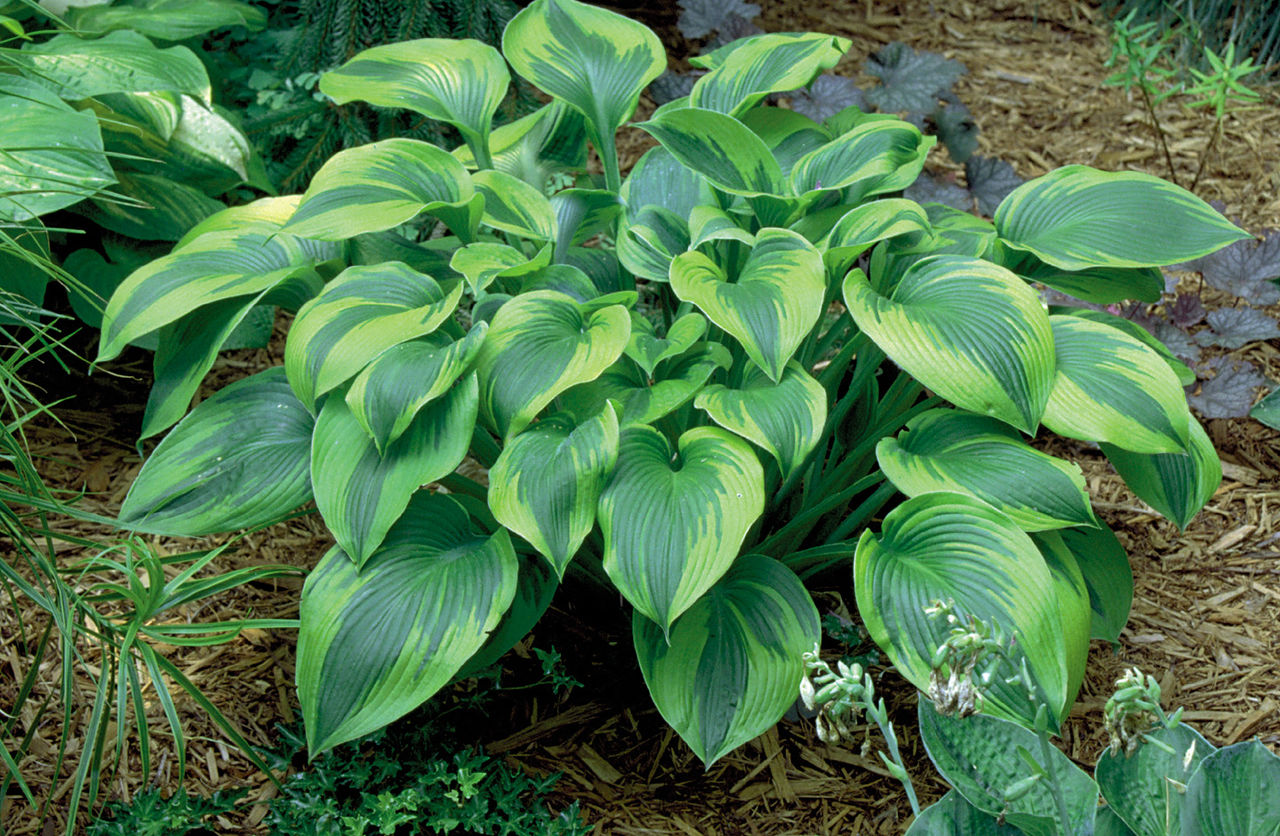
In dry weather, water by sprinkling. Spill the soil up to 15 cm deep. Water in the morning or evening. Water the bushes on sandy soil daily.
3. Diseases and pests
- The main "enemy" of the hosts is a slug. Mulching the soil will help get rid of it. Needle mulch or sharp small pebbles work well. Water only in the morning.
- Yellow spots on the leaves indicate the appearance of a nematode. If you put finely chopped leaves in water for 10-30 minutes, they will be visible in the water. Remove the infected plant from the site.
- From waterlogging, the hostu is affected by a fungal disease. The diseased plant will have to be removed. For prevention, it is recommended to disinfect the instrument, since the disease is transmitted within the site. It is difficult to detect the disease, but blue varieties and curly-headed hosta are most susceptible to it.
Hosts are great in rock gardens, at ponds and in group plantings. Subject to all the features of care and planting rules, this plant will delight you with its lush bush in summer cottages and in gardens, both as a border along the paths and in single plantings. And some miniature species can be grown as a houseplant.
Hosta plant: how to plant and grow properly
In a time of practicality, when all gardeners strive to create gardens that require a minimum of maintenance, choosing a hosta and growing it has become a popular trend. They are also fantastically unpretentious. This is a wonderful plant for lazy gardeners who do not have the opportunity to spend a lot of energy on the garden. The host is able to adapt to any growing conditions, it can be planted under trees and in flower beds, in a lighted place and in the shade. Lush bright bushes will adorn even the most sophisticated garden.
When growing hosta bushes in the open field, there are no special requirements for the condition of the soil. However, it is worth giving preference to humus loams. Humidification should be sufficient, however, care must be taken that the water does not stagnate, and the process of root rotting does not begin.
If the hosta is planted for cultivation and care in open ground with a sandy component, then it probably will not be able to grow there. It is necessary to regularly apply mineral fertilizers and pour some of the fertile soil into the hole before planting.
If we talk about optimal conditions, then this is partial shade, coolness, rather heavy nutrient soil with a slightly acidic reaction, always moist, but without stagnant water.
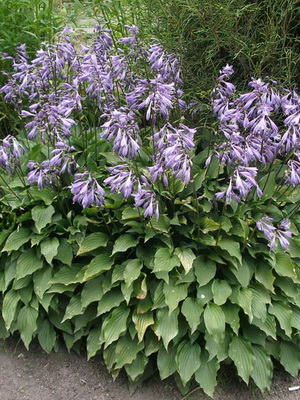
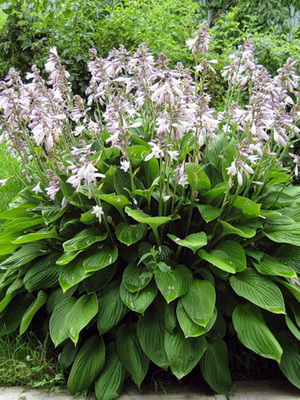
To understand how to grow a beautiful host, you need to know one more feature of it. If the bush has dark leaves, without light blotches, then it should definitely be planted in a shady place. Conversely, the more light blotches a leaf has, the more sunny place the bush needs to be.

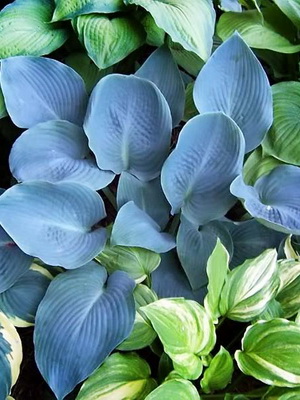
So, "blue" - it is better to plant in the shade, where they retain their color longer, and yellow, on the contrary - in the sun.
For the successful practice of planting and breeding a plant, it is worth highlighting a few tips from experienced gardeners:
- in the first years after planting, the plant may not have pronounced signs of the species, such as multi-colored leaves. This is due to the slow growth rate, and only after 3-4 years it will be possible to fully enjoy the beauty of the plant;
- since it is not difficult to care for a planted host, all procedures are reduced to: weeding, loosening the soil, watering and applying fertilizers. You can limit yourself to just watering, although, of course, with care, the hosts grow faster and look better;
- ordinary cow dung can be used for feeding, but you do not need to use it for very young plants;
- for wintering, you do not need to create special conditions, it is enough just not to remove the fallen leaves, it will protect the plant from freezing.
When the hosta has taken root and has taken root, it can grow in one place for many years, without requiring fertilizing, loosening, watering, etc. But, of course, there are some nuances.
Hosta species and varieties
In industrial volumes around the world today, about 10 species and more than 400 varieties of hostas are cultivated. They are divided into groups according to the height of the bush and the color of the foliage. For example, according to the color of the leaves, the hosts are divided into the following:
- green;
- gray-green and blue;
- white-bordered with a greenish-golden or golden center;
- golden;
- white-bordered with a bluish-green center;
- with a golden border and a golden green, bluish green or white center;
- with a bluish green border and a golden or white center;
- with leaves in strokes and spots;
- with greening, yellowing or whitening leaves;
- other colors not included in the described groups.
Height bush varieties and types host are categorized into:
- dwarf (mini, dwarf), the height of which is about 5-10 cm;
- small (small) no more than 20 cm high;
- medium (medium) up to 30 cm high;
- large (large) up to 45 cm;
- giant (gigant, very large) up to 60 centimeters or more.
Of the species plants in culture, hosts are most often grown white-bordered, swollen, tall, decorative, Siebold, beautiful, curly, Forchuna, lanceolate, or narrow-leaved, small, ovate, rectifier, plantain and wavy. Many forms and varieties of hybrid origin for convenience are combined under the name hybrid host. We offer you a description of the most popular hosta varieties:
- Blue Angel is one of the largest and fastest growing varieties, reaching a height of 125 cm and a width of 120 cm. It has blue leaves up to 40 cm long and up to 30 cm wide and white flowers;
- Blue Moon is a dwarf hosta with a height of only 12 cm and a curtain diameter up to 22 cm with small blue leaves and white flowers, collected in multi-flowered brushes;
- Brim Cap - hosta up to 30 cm high and up to 40 cm in diameter with variegated green leaves with a wide and uneven white border. Its flowers, light blue at the beginning and white towards the middle of flowering, are cup-shaped;
- Cream Cheese is a small hosta with green leaves with a creamy white border and purple flowers;
- Crusader - a variety with heart-shaped dark green leaves with a wide white border and lavender flowers;
- Fragrant Bouquet - a variety up to 45 cm high and up to 65 cm in diameter with green wavy leaves with yellow irregular edging, charming buds and very large white flowers with a pleasant aroma;
- Francis Williams - hosta up to 80 cm high and a curtain diameter of about 1 m. The length of its rounded, fluted bluish-green leaves is about 25, and the width is about 20 cm. The flowers are light lilac, inconspicuous;
- Gold Edger - hosta up to 25 cm in height and up to 30 cm in diameter with heart-shaped leaves of greenish-yellow to golden color up to 10 cm long and up to 7 cm wide. Flowers are lilac, unattractive;
- Gold Standard - a variety with ovoid leaves of dark green color with a golden middle and light purple flowers;
- Great Expression - large hosta with yellowish-creamy wrinkled leaves with irregular green and bluish border and white flowers;
- Ground Master is a bush up to 30 cm high and up to 40 cm in diameter with green leaves up to 25 cm long and up to 10 cm wide with a white border. Lavender flowers;
- June - this variety was recognized as the best in 2001. The height of the bush is about 30 cm, the length of leaves with a golden middle and a bluish-green border is about 12 cm;
- Lights Up is a hosta only up to 8 cm high and up to 10 cm in diameter. The length of very wavy yellow leaves is no more than 12, and the width is no more than 2 cm. The flowers are purple. Sometimes the bush forms stolons, due to which it grows;
- Metallica is a medium-sized hosta with lanceolate, dark greenish-blue leaves with a metallic sheen.The flowers are violet in color of medium intensity;
- The Night Before Christmas - Medium sized hosta with long, dark green leaves with a white center;
- On Stage is a Japanese variety up to 30 cm high and up to half a meter in diameter. Peduncles can reach a height of 60 cm. Tubular flowers are painted in a light blue tone. Leaves with a white center reach 25 cm in length and 12 cm in width, green stripes of two tones pass along them;
- Patriot - this variety has green leaves with distinct stripes up to 2 cm wide. The color of the stripes during the season changes from creamy yellow to white;
- Mount Tom is a large hosta with heart-shaped bluish-green leaves with a light yellow or cream stripe and lavender flowers.

